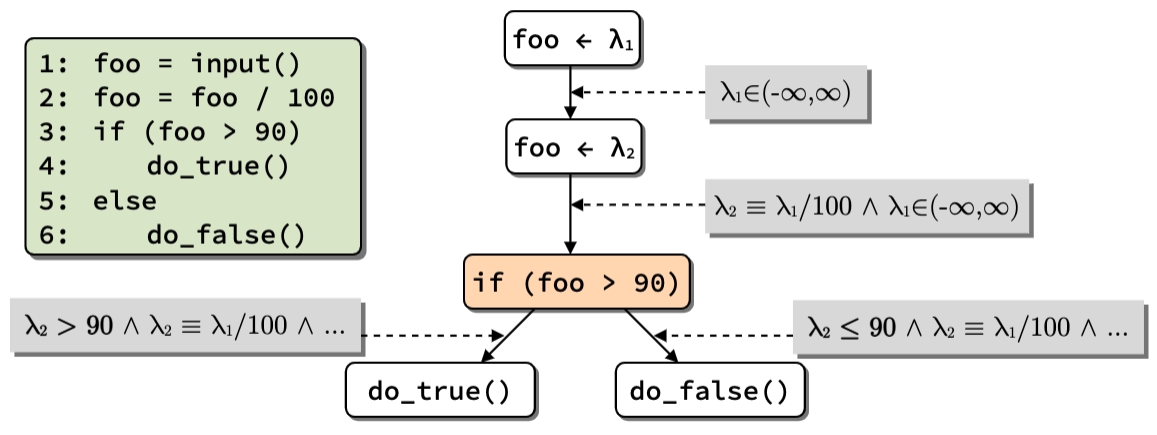Binary and Malware Analysis
Table of Contents
Symbolic execution
Execute programs with symbols instead of values
-
program state (memory, registers, etc.) is symbolic and bound by constraints
- have set of possible values
- subject to constraints, i.e. mathematical restrictions on allowed values
- symbolic variables/expressions are immutable
-
perform all arithmetic & boolean operations symbolically
- output symbolic expressions encoding operation performed
-
fork state when branch depends on symbol
-
unconditional branch – direct control flow
-
concrete conditional branch – follow condition
-
symbolic conditional branch – take both paths
- fork program state and set IP to either path
- add appropriate branch condition as path constraint
- eventually explores all possible paths

-
-
solve constraints to get values when needed (‘concretization’)
Problems with symbolic execution:
- state explosion: number of possible paths in a program is huge, increases with number of branches
- dealing with I/O: do nothing? output?
- modelling environment and hardware (and simulated hardware isn’t the same)
- constraint solving: not all constraints are linear, NP-complete
Basic optimisations:
- expression simplification: use algebra to bring down to minimal form
- state merging: mitigate state explosion when little difference between states
Concolic (concrete + symbolic) execution:
- repeat:
- dynamic analysis to capture trace for concrete run
- symbolic execution on traced instructions, yielding path constraints
- dynamic analysis to capture trace for concrete run
- symbolic execution on traced instructions, yielding path constraints
- adjust constraints by flipping last encountered symbolic branch
- solve constraints of flipped branch, yielding inputs for new path
- advantages: no state explosion so much faster, symbolize only what you need
- drawbacks: need good initial input, can only flip branches controlled by symbolic variables, constraint solving is still hard
SMT solvers: Z3, CVC4, STP
SymbEx engines: KLEE, S2E, Angr, Triton